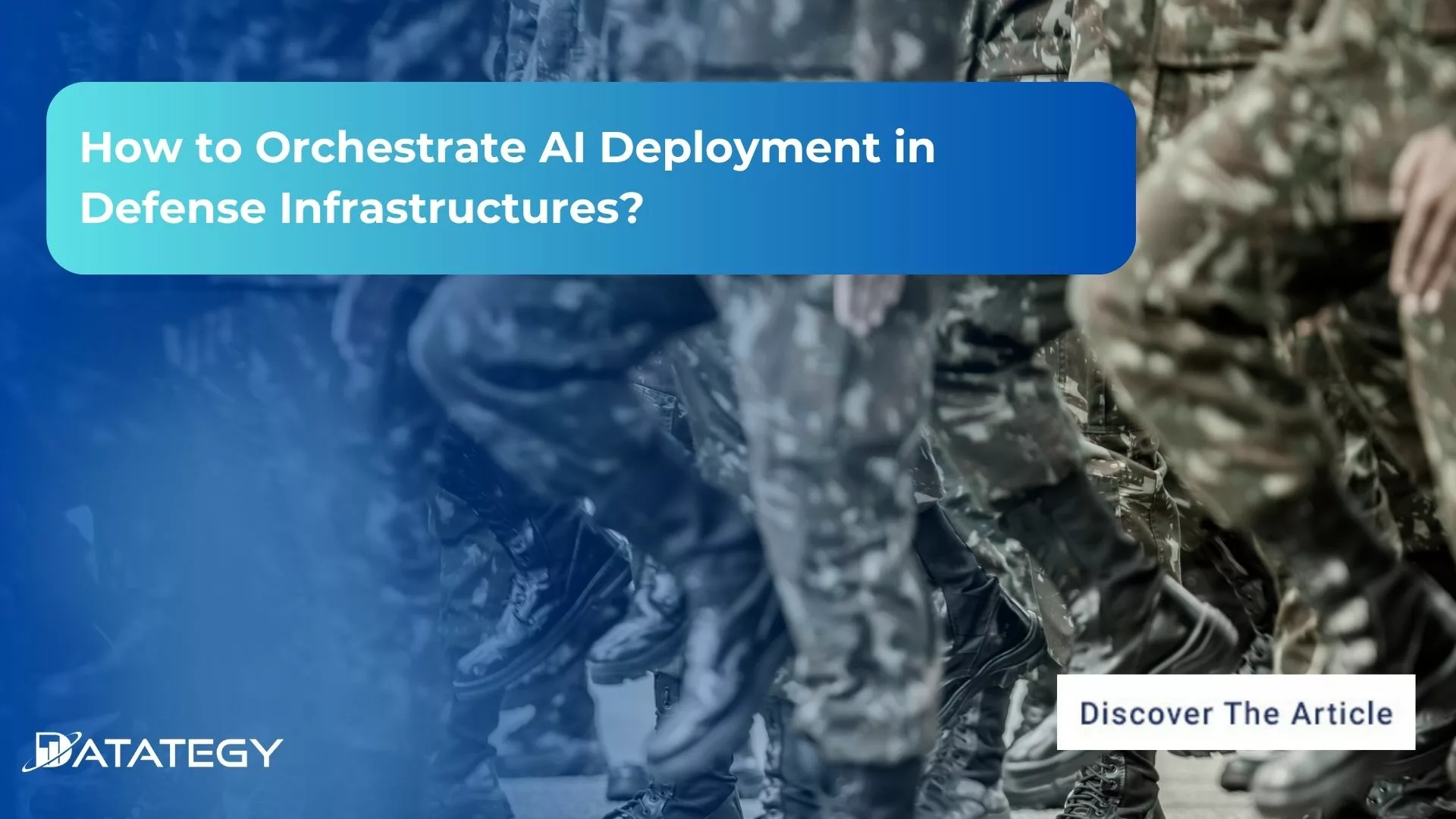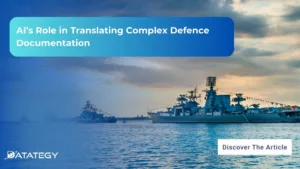We Don’t Just Build AI, We Deliver Measurable Impact Join...
Read MoreHow to Orchestrate AI Deployment in Defense Infrastructures?
Table of Contents
ToggleThe need for strong defense capabilities is greater than ever in today’s fast-changing world. Geopolitical issues are constantly changing the balance of power and influence. Technology is developing quickly, and it greatly affects how countries protect their interests. It also helps them secure their borders and maintain stability.
Equipping defense infrastructures with advanced capabilities is becoming more crucial as emerging challenges surface and traditional threats evolve. This requires more than just acquiring extra hardware; it necessitates the strategic integration of innovative technologies, such as artificial intelligence, to maintain a competitive edge and remain proactive.
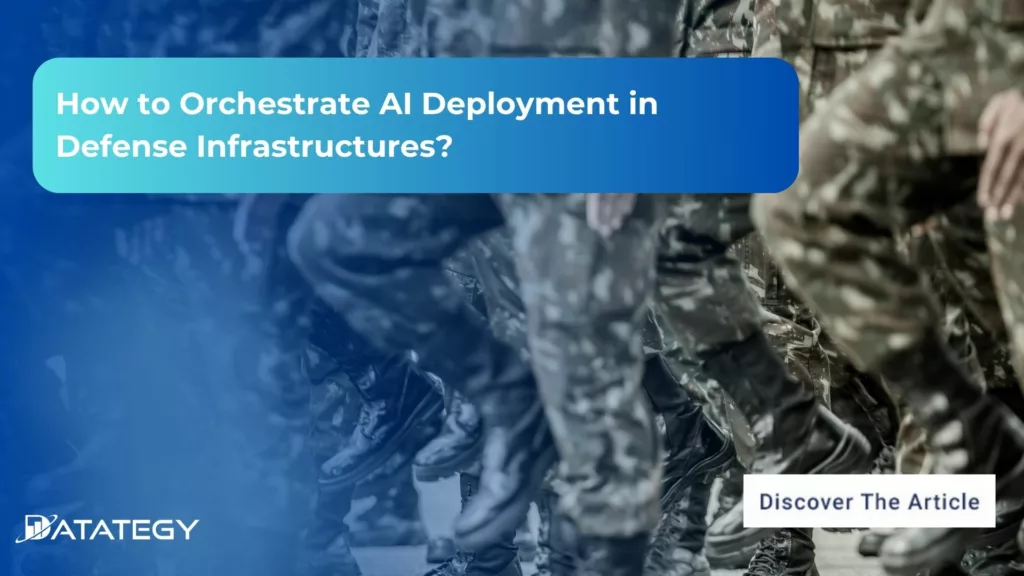
It is anticipated that the military artificial intelligence market will reach $23,974.05 million by 2029 and $61,087.46 million by 2034.(MarketResearch.com)
The Historical Emergence of AI in Defense Systems
The earliest ideas of artificial intelligence were developed in the 1950s, coinciding with the development of computing technology, and this is where the history of AI in defense systems began. Military institutions in the US and USSR started experimenting with basic automation and decision-support systems at this time.
Investments in technology like expert systems, which could carry out specialized tasks like calculating missile trajectories or analysing radar data, were spurred by the Cold War. The groundwork for later defense applications, which concentrated on automating repetitive tasks and improving strategic planning capabilities, was established by initiatives like DARPA’s early AI research.
The application of AI in defense moved from theoretical research to real-world application between the 1980s and the early 2000s. Expert systems developed into increasingly complex instruments that allowed for logistical optimisation and limited battlefield simulations. Armed forces were able to test adaptive systems for threat identification and intelligence collection in the 1990s thanks to the development of machine learning and neural networks.
Drones and autonomous cars advanced into prototype stages, with AI enabling target detection and navigation. Conflicts in Iraq and Afghanistan hastened the deployment of AI-powered surveillance technologies and predictive analytics to oversee intricate operations by the early 21st century.
AI emerged as a key component of global defense innovation between 2010 and 2025. Military forces were able to create robotic systems, autonomous drones, and sophisticated cybersecurity tools thanks to developments in deep learning, computer vision, and natural language processing. In order to integrate air, land, sea, space, and cyber assets in real time, multi-domain operations have become more and more dependent on AI.
AI-driven initiatives for autonomous combat vehicles, simulation training, and decision-making support were led by countries such as the US, China, and Israel. AI is now a vital enabler for mission execution, danger anticipation, and predictive maintenance in extremely dynamic contexts rather than merely a supporting technology.
Why AI Is a Game-Changer for Modern Defense?
1- AI Enables Faster and Smarter Decision-Making
Decisions must frequently be taken in seconds rather than minutes or hours in contemporary defense operations. AI transforms everything at this point. Conventional systems mostly rely on human operators to process data and make calls, which might cause errors or delays when things get hectic. AI takes over by evaluating vast volumes of data in real time and identifying opportunities or risks right away.
An AI system, for instance, can keep an eye on hundreds of monitoring streams, spot odd trends, and notify command centres of a possible drone strike more quickly than any human team. When leaders need precise, data-driven insights, this helps them rather than replaces human judgement. In high-stakes situations where timing is crucial, such cyberattacks or missile defense
2- Transforming Surveillance and Reconnaissance
Understanding what’s going on everywhere at once—on land, at sea, in the air, and even in cyberspace is crucial to modern defense. Because AI gives surveillance and reconnaissance operations extraordinary power, it is a game-changer. Too much raw data is frequently produced by traditional monitoring systems for analysts to manage efficiently.
This is altered by AI, which can quickly sift and analyse gigabytes of sensor and satellite data. It can track targets across several domains, identify covert enemy movements, and even use pattern recognition to forecast probable future actions. Drones with AI capabilities, for example, are able to conduct autonomous surveillance flights and spot any dangers without continual human supervision. Artificial intelligence (AI) systems in maritime defense can identify and categorise unidentified vessels based on minute movement patterns that human operators might overlook.
3- Enhancing Operational Efficiency and Logistics
The “behind-the-scenes” components of military operations, like resource allocation, maintenance, and logistics, are also being transformed by AI. Historically, controlling the flow of soldiers, gear, and supplies has been a difficult and frequently ineffective undertaking. By forecasting demand, spotting possible bottlenecks, and recommending the optimum routes or deployment tactics, AI aids in the optimisation of these procedures.
AI is used, for instance, by predictive maintenance systems to keep an eye on the condition of military ships, planes, and vehicles. AI predicts when maintenance is required, eliminating breakdowns and prolonging equipment life, as opposed to waiting for pieces to fail, which can ground entire fleets. Artificial intelligence (AI) systems in supply chain management examine factors like traffic, weather, and geopolitical threats to make sure supplies go to where they’re most needed.
4- Increasing Resilience and Cybersecurity
Cybersecurity becomes just as important as conventional physical defenses as defense operations transition into the digital era. AI has become an essential tool for defending military systems against ever-more-advanced cyberattacks. Contemporary artificial intelligence (AI) systems are able to automatically recognize possible breaches, detect irregularities in network traffic, and react to attacks, often before human cybersecurity teams are even aware of the issue.
This is particularly crucial since state and non-state actors are always attacking military networks in an effort to sabotage operations or steal confidential data. AI-driven cyber defense tools are more successful than static, rule-based systems because they use machine learning to instantly adjust to new attack techniques. AI is used in offensive cyber operations in addition to defense, as it assists in locating weaknesses in adversaries.
What are the Key Challenges in Deploying AI for Defense
1- Data Security and Sovereignty
Sensitive data protection is vitally important in military systems. Defense agencies deal with vast amounts of secret data, from troop movements to weaponry specs, and any compromise might have dire repercussions. When using AI for defense, data security is therefore of utmost importance. Large volumes of data are necessary for AI systems to learn and function effectively, yet sharing or storing this data comes with concerns.
Data sovereignty, or keeping military data under the jurisdiction of the country that owns it and shielding it from outside parties, is one of the main issues. To stop espionage or meddling, several nations have stringent regulations regarding the storage and transmission of data. This implies that AI systems need to be made to comply by these regulations.
To safeguard data, defense teams employ divided networks, protected cloud environments, and encryption. Furthermore, in order to reduce the need for data to travel great distances, AI models are increasingly being trained “on the edge”—directly on military equipment or secure local servers. Maintaining trust and operational integrity in military systems requires striking a delicate balance between the need for strong AI and stringent security and sovereignty requirements.
2- Balancing Speed and Accuracy
Timing is crucial in defense. Although AI systems are made to provide commanders with quick insights during combat, accuracy must never be sacrificed for speed. A false alarm or erroneous prediction could have major consequences, including resource waste, fatalities, or even unplanned escalation. Building AI models that can process complicated data quickly while retaining high dependability is a problem.
To achieve the ideal balance, this requires meticulous testing and tuning. AI-powered threat detection systems, for instance, need to be able to spot enemy activities fast without bombarding operators with false positives. AI systems frequently employ layered ways to accomplish this, where a quick scan identifies possible problems and a more thorough study validates them before taking any further action.
Additionally, by giving back actual mission data, AI developers continuously enhance models, enabling the system to learn from errors and improve over time. AI is a useful ally in crucial military operations because of its ability to balance speed and accuracy, allowing for quick, well-informed reactions without compromising credibility.
3- Integrating AI into Legacy Defense Infrastructure
Many defense agencies still use obsolete equipment that wasn’t built for artificial intelligence. It can be challenging to incorporate contemporary AI solutions into these antiquated systems. The flexibility, processing power, or data formats required for AI algorithms to function well are frequently absent from older technology and software. Usually, the integration procedure calls for progressive updates and meticulous planning.
One popular strategy is to create AI apps that can integrate with current systems, connecting and exchanging data via middleware or APIs. In this manner, AI can introduce new features without completely changing everything at once. To accommodate AI workloads, traditional systems might require cloud-based components or hardware updates. In order to ensure seamless adoption and lessen resistance to change, it is equally necessary to train workers on new tools.
The objective is to build a hybrid environment in which AI complements existing procedures rather than interferes with them. When AI is successfully incorporated into legacy defense infrastructure, militaries may modernise gradually, conserving investments in tried-and-true technology while gaining new capabilities and efficiencies.
Strategies for Effective AI Deployment in Defense
1- Integrate AI Incrementally into Legacy Systems
The majority of defense agencies have decades-old infrastructure that is frequently not AI-ready. Rather than replacing everything at once, integrating AI gradually is a more successful deployment strategy. This entails creating AI applications that can coexist with traditional software and hardware while facilitating seamless communication through the use of middleware or APIs.
Defense forces can modernise without interfering with operations through gradual integration. In order to better serve AI, legacy systems are occasionally updated with more processing power or cloud connectivity. Adoption of new AI tools also depends on military personnel receiving training. This methodical strategy unlocks the benefits of AI while lowering risk, cutting expenses, and leveraging current investments. This tactic gradually turns antiquated systems into defense networks driven by AI.
2- Balance Speed and Accuracy with Human Oversight
Defense AI needs to be quick and precise, particularly in missions when choices could mean the difference between life and death. Finding the ideal mix between dependable outputs and quick AI processing is a crucial deployment approach. A tiered approach is used by many AI systems; rapid first scans identify possible risks, which are then followed by more thorough and precise analysis before any action is performed.
This increases operator confidence and lowers false alarms. But in high-stakes scenarios, AI should never operate alone. Human supervision is still crucial. Skilled commanders combine machine speed and human judgement to evaluate AI recommendations and make final decisions. Over time, ongoing operator feedback also contributes to increased AI accuracy. This harmony guarantees AI functions as a reliable helper, speeding up decisions without compromising security or responsibility.
3- Prioritize Data Security and Sovereignty
AI systems used in defense handle extremely sensitive data that needs to be kept safe and under governmental authority. Designing AI deployments with data security and sovereignty as guiding principles is a crucial tactic. This entails utilising secure, separated networks, encrypting data both in transit and at rest, and retaining important data inside national borders.
Additionally, “edge computing,” which analyses data locally to limit exposure, is preferred by defense agencies. Strict access control is another factor; sensitive data can only be accessed by authorised persons and AI components. Building confidence among stakeholders and preventing expensive retrofits later are two benefits of starting with security in mind. Additionally, it guarantees adherence to both international and national laws. Armed forces can safely use advanced AI capabilities without worrying about data leaks if security is incorporated into the AI architecture early on.
4- Build a Multi-Layered AI Deployment Framework
Installing a single system is not the goal of deploying AI in defense; rather, a multi-layered strategy that integrates several AI technologies at various levels is required. AI functions at the edge (near sensors and soldiers), at central command centres, and in the cloud thanks to a multi-layered architecture. For instance, edge AI can instantly identify dangers in real time by analysing data locally on cars or drones.
Higher-level AI systems at command centres, meanwhile, combine information from many sources, offer strategic analysis, and plan out larger operations. Scalability, dependability, and performance are guaranteed by this tiered architecture. Additionally, it increases robustness because other layers can take over if one layer experiences problems. Careful architecture design is necessary when building this framework to guarantee seamless data flow.
5- Foster Collaboration and Partnerships Across Military, Industry
The use of AI in defense is a huge problem that cannot be resolved by one organisation. Building solid cooperation and alliances between military organisations, defense contractors, tech firms, and academic institutions is another crucial tactic. This network fosters a vibrant environment for knowledge exchange, research acceleration, and the quick prototyping of AI solutions.
The newest AI advancements help defense organisations and businesses learn about practical military needs. Universities support the development of the next generation of AI expertise and provide cutting-edge research. By combining resources and knowledge, collaborative ventures and public-private partnerships also aid in risk management. International cooperation among allies can also create ethical standards, enhance interoperability, and standardise the usage of AI.
Together, these parties guarantee that the application of AI in defense is creative, moral, and consistent with strategic objectives. To stay up with the rapidly evolving AI technologies and challenging defense issues, this open ecosystem is crucial.
Real-World Applications of AI in Defense Innovations
1- Intelligent Drones and Autonomous Systems
Modern defense is changing as a result of autonomous systems and intelligent drones that enable operations to be completed more quickly, precisely, and safely. These AI-powered devices are capable of carrying out duties like surveillance, reconnaissance, and even targeted attacks without direct human supervision. With sensors and cameras, smart drones collect data in real time and instantly analyse it to spot targets or dangers.
By keeping soldiers safe in hazardous situations, this lowers the risk to them. Drones, for instance, can perform autonomous search and rescue operations, border patrols, and infrastructure inspections. By moving supplies over challenging terrain, autonomous ground vehicles assist logistics and free up soldiers to concentrate on mission-critical duties. These systems can quickly make decisions, avoid barriers, and adjust to changing conditions thanks to AI.
2- AI-Driven Predictive Maintenance for Military Equipment
For missions to be successful, military equipment must be kept in optimal condition. By anticipating faults before they occur, AI-driven predictive maintenance is completely changing how armies maintain their vehicles, planes, and other equipment. AI systems examine sensor data from equipment to identify wear or failure early on rather than waiting for breakdowns. An AI model, for instance, can identify anomalous vibrations in an aeroplane engine or temperature variations in a tank’s constituent parts, indicating the need for maintenance.
This proactive strategy avoids unplanned failures and expensive downtime during crucial operations. Additionally, by concentrating efforts where they are most required, it optimises repair schedules, saving time and money. By guaranteeing that machines are dependable when in use, predictive maintenance increases safety and prolongs the life of costly equipment.
3- Simulation and Training with Advanced AI Models
AI-powered simulation provides a potent substitute for costly and dangerous real-world combat training. Cutting-edge AI models may produce lifelike virtual worlds where soldiers can rehearse coordination, tactics, and decision-making without risk. These simulations employ artificial intelligence (AI) to manipulate virtual adversaries that change and pick up on player behaviour, offering dynamic challenges that enhance abilities more successfully than static drills.
AI-powered war games, for instance, are capable of simulating cyberattacks, urban combat, and intricate coordinated air, land, and sea force operations. Instant feedback helps soldiers gain confidence and learn more quickly. By evaluating each person’s unique strengths and shortcomings, AI also customises training, adjusting settings to optimise learning. Technologies like virtual reality (VR) and augmented reality (AR) improve immersion and make instruction seem as genuine as possible.
4- Enhancing Battlefield Communication and Coordination
On the battlefield, where confusion and disorder can result in errors, effective coordination and communication are essential. AI improves these elements by offering intelligent communication solutions that guarantee leaders and soldiers remain informed and connected. When conducting joint operations with allied forces, for example, AI technologies may translate foreign languages instantly in real time, removing communication hurdles.
AI-driven networks manage bandwidth, filter out noise, and prioritise important information to keep connections steady even in difficult situations. By compiling battlefield data and recommending the best unit deployments, intelligent assistants support commanders. Soldiers can improve situational awareness and response times by sharing live video, location information, and health status with medical units and teammates using wearable AI gadgets.
AI-driven communication tools reduce message delivery delays by 50% in military operations.
Datategy Magazine: AI Industrialization & Future Challenges
Datategy Magazine serves as your premier source for in-depth data insights, offering comprehensive coverage of the latest trends, strategies, and developments in the data industry. With a focus on AI industrialization and future challenges, we provide valuable analysis and expert commentary to help you stay ahead in this rapidly evolving landscape.
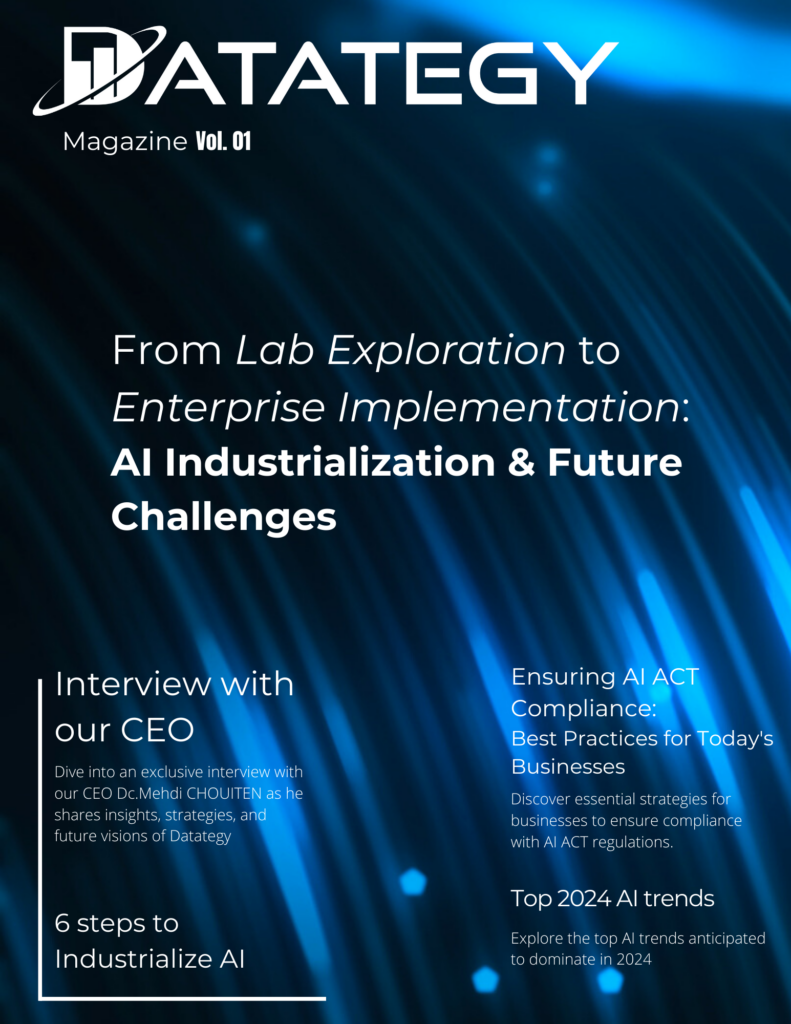
Streamlining AI with papAI: Key Benefits and Features
papAI is a flexible and scalable AI platform built to manage the entire machine learning lifecycle, from data preparation to model deployment, while easily fitting into your existing systems.
Designed to help companies industrialize their AI and data science projects, papAI promotes seamless collaboration by bringing teams together on one unified platform. Its user-friendly interface enables groups to work side by side, tackling complex challenges efficiently.
The platform supports a wide range of machine learning methods and offers various options for deploying models. It also includes powerful tools for exploring data, cleaning and preparing datasets, and visualizing results—all aimed at simplifying workflows and accelerating AI-driven outcomes.
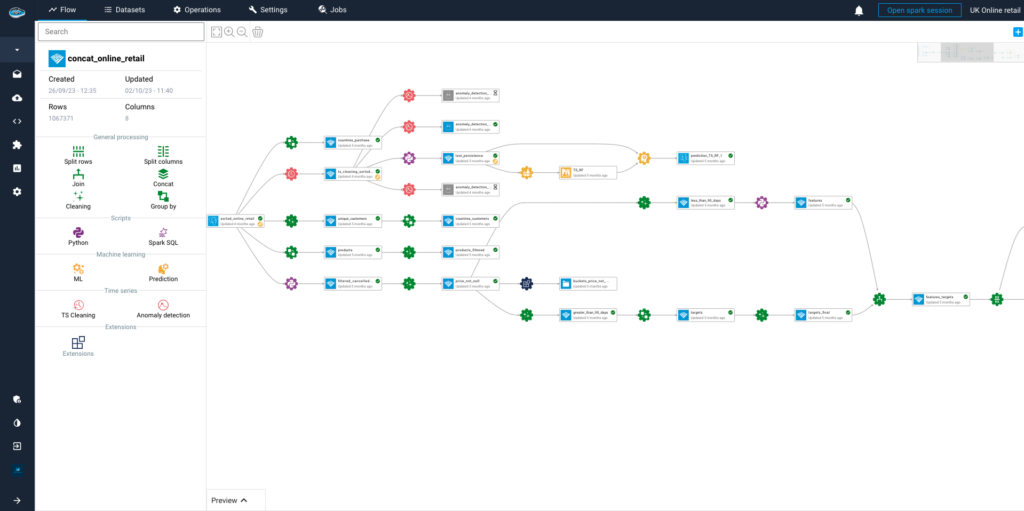
Here’s an in-depth look at the key features and advantages of this innovative solution:
Simplified Model Implementation
papAI Solution greatly simplifies the machine learning model installation procedure by utilising the Model Hub. The main source of pre-built, deployment-ready models from papAI is the Model Hub (which includes Binary Classification, Regression model, Clustering, Ts Forecasting, etc.). Consequently, companies no longer need to start from scratch when developing models. People who use the papAI solution frequently save 90% of their time when implementing AI concepts, per our most recent survey.
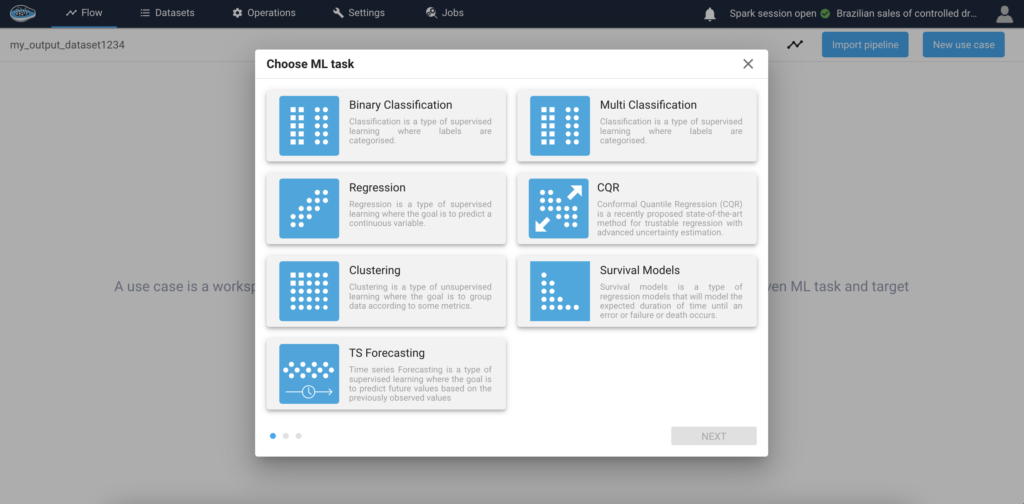
Efficient Model Monitoring & Tracking
With the range of monitoring tools provided by papAI Solution, organisations can keep an eye on the most crucial model performance metrics in real time. Metrics like accuracy, precision, and other relevant indicators can be used by users to monitor the model’s performance and spot any potential issues or deviations. This continuous monitoring guarantees high-quality outputs and makes it possible to proactively identify any decline in model performance. We have shown our clients accuracy of up to 98%.

Enhanced Interpretability and Explainability of the Model
In the past, deep learning and advanced machine learning models have been perceived as “black boxes,” making it challenging to understand how they produce predictions. papAI solution uses state-of-the-art model explainability techniques to directly solve this issue. It highlights the crucial components and traits that influence forecasts and provides insights into the inner workings of the models. The puzzle of how AI models predict the future has been resolved by papAI, which allows stakeholders to see precisely how these algorithms make judgements.
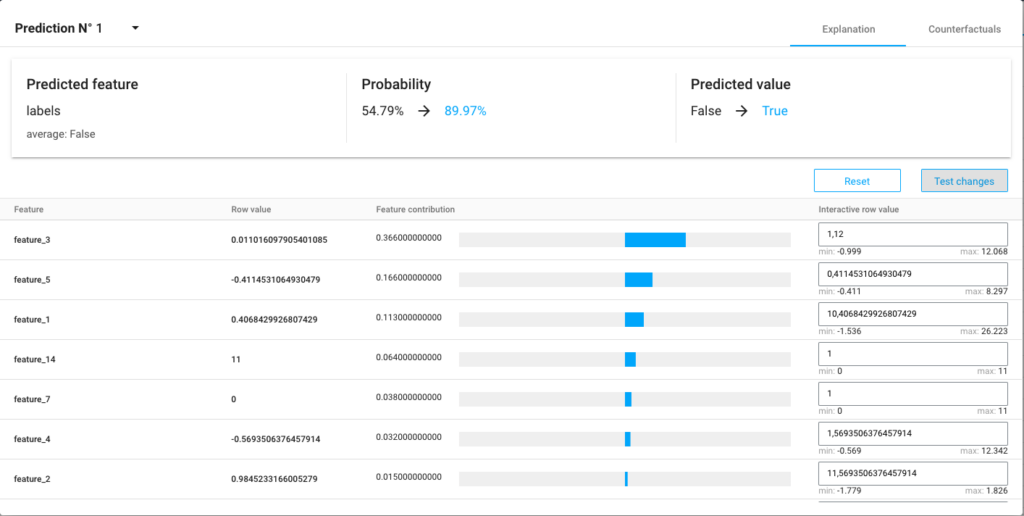
What Makes papAI Unique?
Error Analysis Tree for fairness and transparency
Beyond conventional bias identification, papAI’s Error Analysis Tree for Fairness and Transparency is a sophisticated tool that automatically recognizes and comprehends model faults. Businesses can find hidden problems in a model’s predictions by using this method to break down model performance by dividing the data into subgroups and identifying regions of high inaccuracy.
This analysis tool ensures that fairness and transparency are prioritized by not only assessing model performance across various groups but also identifying specific instances where the model underperforms, making it easier to address issues systematically.
- Beyond Equity measures: The Error Analysis Tree isn’t limited to merely equity-related issues, in contrast to traditional bias analysis, which usually concentrates on equity measures, which assess whether the model treats particular groups unjustly (for example, based on gender, ethnicity, or socioeconomic status). It offers a more comprehensive perspective, looking at performance across a range of data attributes rather than simply pre-established protected groups.
- Root Cause Analysis Without Predefined Groups: Unlike bias analysis tools that require users to define protected groups (such as specific demographic or identity groups) beforehand, the Error Analysis Tree autonomously explores the data to discover and highlight the real sources of errors. It offers a deeper, data-driven exploration of where and why the model fails, providing more accurate insights into underlying problems.
- Performance Improvement Focus: While bias analysis is often focused on measuring discrepancies between groups, error analysis is more performance-oriented. The goal of error analysis is not merely to detect whether disparities exist between groups, but to identify specific areas where the model is weak or inaccurate. This facilitates targeted improvements to the model, making it more effective and fair across all subgroups.
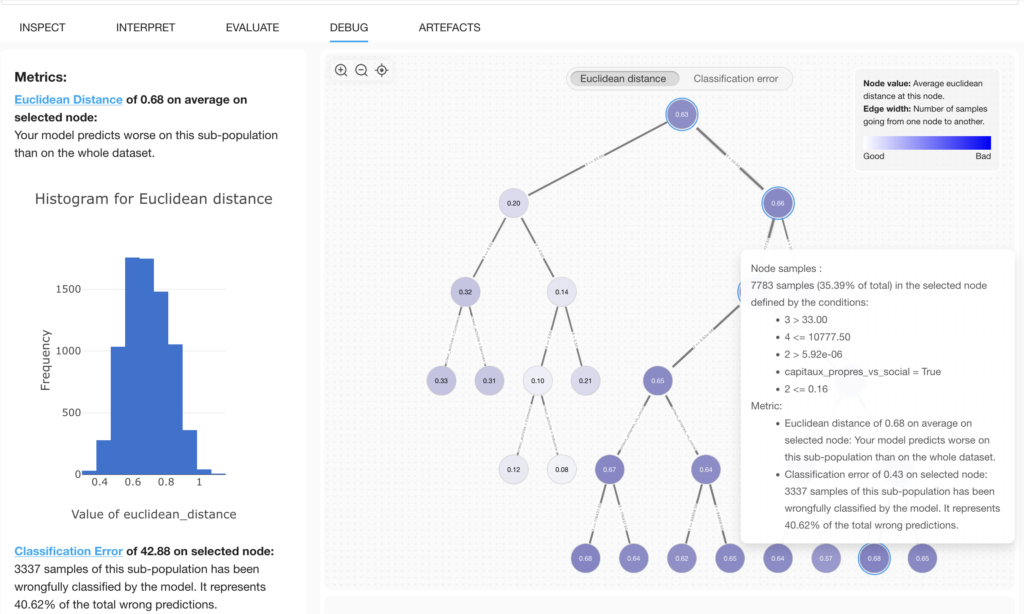
Leverage papAI's AI Capabilities for Superior Model Performance
In conclusion, supervising the implementation of AI in defense infrastructures is a challenging but crucial undertaking. Defense organisations may unlock strong new capabilities that improve mission success and safety by carefully integrating AI with current systems, prioritizing data security, striking a balance between speed and accuracy, and investing in the proper skills. AI is a strategic advantage that has the potential to revolutionize military operations planning and execution, not just a technological advancement.
Ready to take the next step? Book a demo with a Datategy expert today and discover how our AI solutions can help your defense team deploy AI smoothly and effectively.
Orchestrating AI deployment ensures that AI technologies are integrated smoothly and securely across complex defense systems. It helps align AI tools with mission goals, improves operational efficiency, and maintains data security and sovereignty, all critical in defense environments.
Legacy systems often lack the flexibility or computing power needed for AI. Integrating AI requires careful planning, gradual upgrades, and ensuring new AI applications can communicate with older hardware and software without disrupting operations.
Investing in training and developing in-house AI specialists like data scientists and engineers helps defense organizations customize AI tools, maintain systems, and foster trust and smooth collaboration between humans and AI technologies.
papAI is a scalable, modular AI platform designed to manage the entire machine learning lifecycle. It helps businesses industrialize and run AI and data science projects by providing collaborative tools that enable teams to work together on a single platform.
The platform offers a variety of machine learning approaches, options for model deployment, and supports data exploration, cleaning, preprocessing, and visualization. These features streamline the AI workflow from start to finish.
Interested in discovering papAI?
Watch our platform in action now
AI’s Role in Translating Complex Defence Documentation
AI’s Role in Translating Complex Defence Documentation The defence sector...
Read MoreHow AI Transforms Technical Documentation in Medical Devices and Life Sciences
How AI Transforms Technical Documentation in Medical Devices and Life...
Read MoreDatategy and Alpha X Join Forces to Strengthen AI-Driven Governance Across EMEA
Datategy and Alpha X Join Forces to Strengthen AI-Driven Governance...
Read More